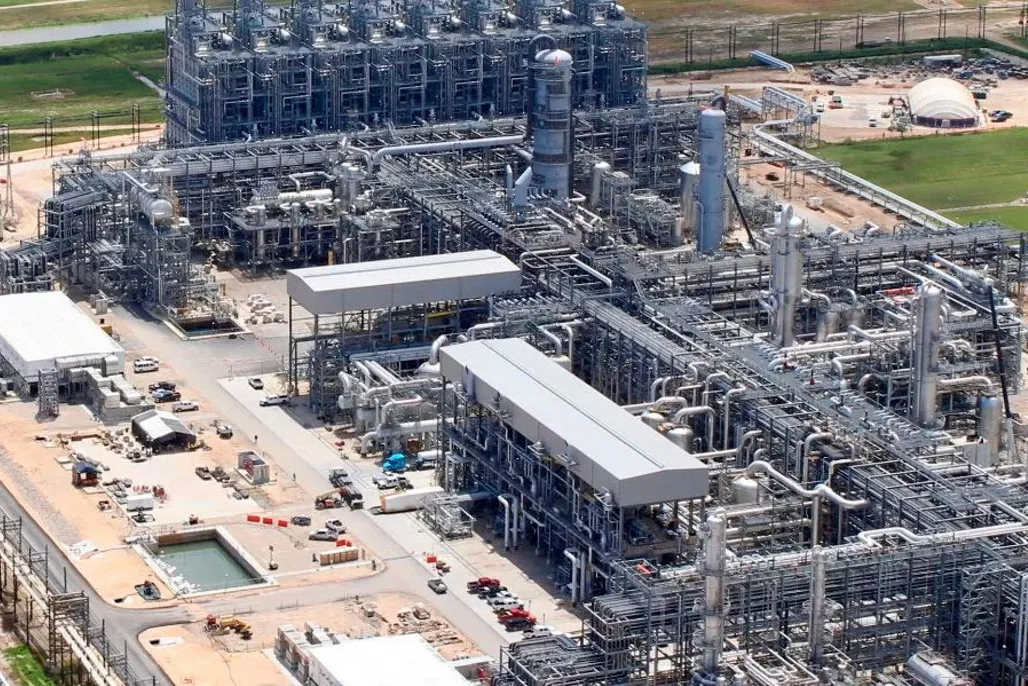
The US blue hydrogen sector is experiencing a dramatic breakthrough in 2025, with over 1.5 million tonnes per annum heading toward final investment decision. That's roughly ten times what green hydrogen is expected to secure this year, marking a significant shift in how North America approaches clean energy infrastructure.
According to Wood Mackenzie's latest analysis, at least three large-scale US blue hydrogen projects are advancing toward FID this year. These developments come as policy support solidifies under the Trump administration, which has kept the 45Q carbon capture tax credit intact while green hydrogen faces mounting regulatory uncertainty.
Policy Support Drives Blue Hydrogen Investment Wave
The 45Q tax credit has emerged as the cornerstone of blue hydrogen economics in 2025. Strong support from the oil and gas lobby has ensured this incentive remains available, creating a stable foundation for massive industrial investments that require long-term policy certainty. This federal support parallels the momentum building in carbon capture and storage projects across the country.

"We predict that the 45Q tax credit will remain in place due to strong support from the oil and gas lobby, and its importance in facilitating US exports of blue ammonia. As a result, we predict that a surge in blue hydrogen investment, with at least three large-scale blue hydrogen projects reaching FID, will see the US emerge as the world's leading blue hydrogen producer."
Greig Boulstridge, Research Analyst at Wood Mackenzie
The contrast with green hydrogen couldn't be starker. While blue hydrogen benefits from established infrastructure and proven technology, green hydrogen faces headwinds from regulatory uncertainty and competition for capital from data centers and other lower-risk sectors. Wood Mackenzie projects green hydrogen FIDs will continue to disappoint in 2025, with only modest capacity additions despite ambitious long-term goals.
Major Projects Moving Toward Construction
Several high-profile blue hydrogen initiatives are progressing through final engineering and financing stages. These projects represent billions in capital investment and will establish the US as a global blue hydrogen leader.
>> RELATED: Blue Hydrogen's Surprising New Advantage in 2025

ExxonMobil's Baytown Facility
ExxonMobil's Baytown complex in Texas is set to become the world's largest low-carbon hydrogen project at planned startup. The facility aims to produce up to 1 billion cubic feet per day of blue hydrogen while capturing over 98% of associated CO2 emissions. Worley was awarded the EPC contract in late 2024, with FID expected in 2025 and startup targeted for 2029.
The project includes partnerships with Mitsubishi Corporation for ammonia offtake and ADNOC, which acquired a 35% stake in the project. The hydrogen will reduce emissions at ExxonMobil's integrated Baytown operations by up to 30% while making low-carbon hydrogen available to other Gulf Coast industrial facilities.
Lake Charles Methanol II
Lake Charles Methanol II represents a $5 billion investment in Louisiana's Port of Lake Charles. The project will use autothermal reforming technology with carbon capture to produce approximately 500,000 tonnes of blue hydrogen annually, which will be converted into 3.6 million tonnes of blue methanol per year.
The facility expects to reach financial close and construction start in 2025, with commercial operation slated for 2027. The project will capture and sequester about 1 million metric tons of CO2 annually through a 20-year agreement with Denbury, an ExxonMobil subsidiary. This clean hydrogen project is expected to create over 18,000 construction jobs and 200 permanent positions.

Linde's Beaumont Hydrogen Complex
Linde is investing $1.8 billion to build a blue hydrogen production facility in Beaumont, Texas. The project will supply clean hydrogen to OCI Global's 1.1 million tonne per year blue ammonia plant while sequestering more than 1.7 million metric tons of CO2 annually.
The facility is expected to start production in 2025 and will be integrated into Linde's extensive Gulf Coast pipeline network. This allows Linde to market blue hydrogen to other downstream customers in the region seeking to decarbonize their operations. Under a separate agreement, ExxonMobil will transport and permanently store up to 2.2 million metric tons of CO2 per year from Linde's hydrogen production facility.
CF Industries Blue Point Complex
CF Industries, the world's largest ammonia producer, reached FID in April 2025 on its Blue Point Complex in Louisiana. The joint venture with JERA and Mitsui will construct a 1.4 million metric ton per year low-carbon ammonia facility using autothermal reforming technology with carbon capture.
The project expects to capture greater than 95% of carbon dioxide generated from ammonia production. Pre-construction activities and engineering evaluations began in 2025, with construction expected to start in 2026 and low-carbon ammonia production commencing in 2029. Technip Energies was awarded the EPC contract valued at over €1 billion.
Key Blue Hydrogen Projects Advancing in 2025
- ExxonMobil Baytown: 1 billion cubic feet per day hydrogen capacity, 98% CO2 capture rate, FID expected 2025
- Lake Charles Methanol II: 500,000 tonnes per year hydrogen production, $5 billion investment, construction start 2025
- Linde Beaumont: $1.8 billion facility, 1.7 million tonnes CO2 sequestration annually, startup 2025
- CF Industries Blue Point: 1.4 million tonnes ammonia capacity, 95%+ CO2 capture, construction begins 2026
- Combined Impact: Over 1.5 million tonnes blue hydrogen capacity reaching FID in 2025
Gulf Coast Emerges as Blue Hydrogen Hub
The concentration of projects along the Texas and Louisiana Gulf Coast isn't coincidental. This region offers critical advantages including existing natural gas infrastructure, proximity to CO2 storage sites, access to industrial customers, and established petrochemical complexes that can integrate hydrogen into their operations.
The Houston Energy Transition Initiative brings together major companies committed to advancing CCS efforts in the region. ExxonMobil, Air Liquide, BASF, Shell, Chevron, Dow, Linde, LyondellBasell and others are collaborating to capture and store up to 50 million metric tons of CO2 per year by 2030 and 100 million metric tons annually by 2040.
This infrastructure buildout creates network effects that lower costs for individual projects. Shared CO2 pipelines and storage sites reduce capital requirements, while the concentration of hydrogen producers and consumers improves offtake economics. These advantages give Gulf Coast projects a clear competitive edge over standalone developments in other regions.

"The path to successful large-scale FIDs is not straightforward. Key factors such as securing offtakers, access to renewable energy, favourable regulatory environments, and government subsidies are critical for projects to move forward."
Monica Trilho, Research Analyst at Wood Mackenzie
Blue Hydrogen as Bridge Technology
The surge in blue hydrogen investment reflects a pragmatic approach to decarbonization. While green hydrogen remains the long-term goal for many developers, blue hydrogen offers immediate emissions reductions using proven technology and existing infrastructure. This bridge strategy allows industrial facilities to begin decarbonizing operations today rather than waiting for green hydrogen costs to fall.
Blue hydrogen projects typically achieve 90-95% carbon capture rates, dramatically reducing the carbon intensity compared to conventional gray hydrogen. For industries like ammonia production, steel manufacturing, and refining, this represents a viable path toward meeting 2030 and 2040 emissions targets without disrupting existing operations.
The technology also provides critical learning opportunities. Developing large-scale hydrogen production, transportation, and storage infrastructure today creates the foundation needed for an eventual transition to green hydrogen. Many blue hydrogen facilities are being designed with future conversion to green hydrogen in mind, allowing for a gradual shift as renewable energy becomes more abundant and electrolyzer costs decline.
Challenges and Opportunities Ahead
Despite the positive momentum, blue hydrogen developers face several challenges. Securing binding offtake agreements remains critical, with Wood Mackenzie noting that over 2.5 million tonnes per annum of uncontracted FID capacity currently exists. The US accounts for a majority of this uncontracted volume, creating risk for projects moving forward without guaranteed customers.
Competition from international markets adds another layer of complexity. While US projects advance, other regions are developing their own hydrogen strategies. China recently announced seven major industrial and power carbon capture projects, while Middle Eastern producers leverage low-cost natural gas to compete on price. European refineries are also emerging as significant hydrogen consumers, potentially absorbing supply that might otherwise flow to US markets.
However, the US maintains key advantages. The combination of stable tax credits, abundant natural gas resources, established industrial base, and strong project execution capabilities positions North America favorably in the global hydrogen race. The 2025 surge in blue hydrogen FIDs suggests developers are confident these advantages will translate into commercial success.
Looking Beyond 2025
The projects reaching FID in 2025 represent just the beginning of a broader transformation. As these facilities come online between 2027 and 2029, they'll demonstrate the commercial viability of blue hydrogen at scale. Success could trigger additional investment waves as companies see proven economics and operational performance.
Integration with ammonia production offers particularly compelling economics. Blue ammonia serves both traditional fertilizer markets and emerging applications in power generation and maritime fuel. This dual market opportunity improves project returns while supporting global decarbonization efforts in hard-to-abate sectors.
The 2025 investment surge positions the US to lead global blue hydrogen production for the coming decade. With policy support solidified, major projects advancing, and Gulf Coast infrastructure developing rapidly, North America is establishing itself as the go-to destination for low-carbon hydrogen investment. This leadership role could shape energy markets for decades to come.
Subscribe to the newsletter
Daily decarbonization data and news delivered to your inbox
Follow the money flow of climate, technology, and energy investments to uncover new opportunities and jobs.
Companies
-
CF Industries Holdings
CF
-
Chevron
CVX
-
Denbury Resources
DEN
-
Linde Plc
LIN
-
LyondellBasell Industries NV
LYB
-

Shell
SHEL
-

Mitsubishi Heavy Industries
-
ExxonMobil
XOM
-

TechnipFMC
FTI
Latest issues
-
64 Carbon Projects Were Stuck. Texas Just Unlocked Them
Inside This Issue 🛢️ 64 Carbon Projects Were Stuck. Texas Just Unlocked Them ⚙️ In Ohio, Hydrogen Industry Presses on Despite Federal Uncertainty 🧲 Agami Zero Breaks Through With Magnetic Hydrogen...
-
This U.S. Plant Might Change Aviation Forever
In This Issue 🛫 A Georgia Plant Just Cracked Aviation's Fuel Puzzle 📉 CO2RE And ERM Release 2025 Update On Greenhouse Gas Removal Costs 🔗 Abatable Partners With BlueLayer To Streamline Corporate C...
-
Canada Just Made CCUS Way More Profitable
Inside This Issue 💼 Canada Unlocks EOR for Federal Tax Credits in Landmark Policy Shift 🚀 Carbontech Funding Opens as CDR Sector Pushes for Net-Zero Standard Revisions 💧 CHARBONE Confirms its Firs...
Company Announcements
-
Step strengthens Louisiana’s role in U.S. energy leadership and advances project finance process for biomass‑to‑fuel facility SACRAMENTO, Calif. & NEW ORLEANS -- DevvStream Corp. (Nasdaq: DEVS...
-
Climeworks Opens the World’s Largest Direct Air Capture Innovation Hub
Key takeaways: Climeworks launches the largest innovation center for Direct Air Capture, employing over 50 engineers in Zurich, Switzerland. The center is designed to reduce the cost and increase...
-
XCF Global Moves to Double SAF Production with New Rise Reno Expansion
Initial development completed at New Rise Reno 2, advancing XCF's second SAF production facility and positioning construction to begin in 2026. $300 million planned investment will double XCF'...
-
Carbon Capture Technology Relies on High-Performance CO2 Sensors
As the Global South's first Direct Air Capture (DAC) company, Octavia Carbon has commissioned the world's second DAC + geological storage plant. Harnessing Kenya's abundant renewable geothermal ene...